




 St Kentigern, Great Crosthwaite
St Kentigern, Great Crosthwaite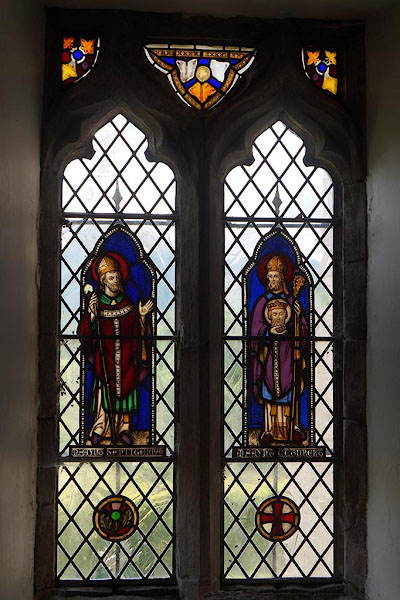
CBA56.jpg Stained glass; St Kentigern, St Cuthbert, by William Wailes.
(taken 9.7.2014)
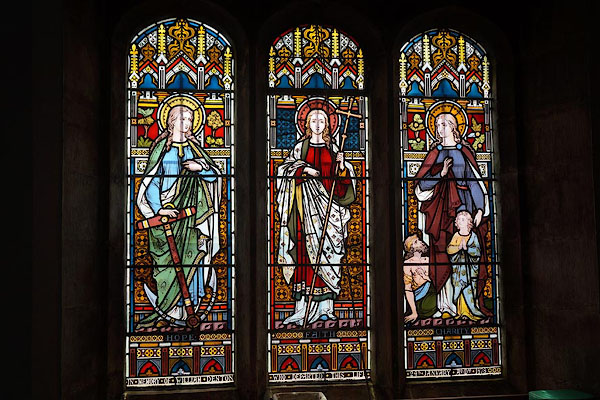
CBA57.jpg Stained glass; Hope, Faith, Charity, by William Wailes, about 1878.
(taken 9.7.2014)

CBA58.jpg Stained glass; morning, noon and night, by John Hardman.
(taken 9.7.2014)
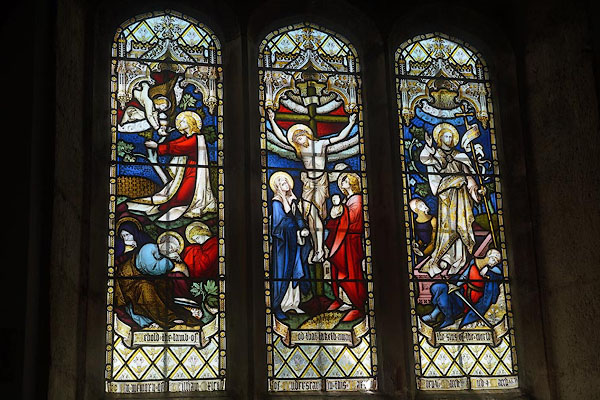
CBA59.jpg Stained glass; in the Garden of Gethsemane, the Crucifion, the Resurrection, by John Hardman, about 1871.
(taken 9.7.2014)
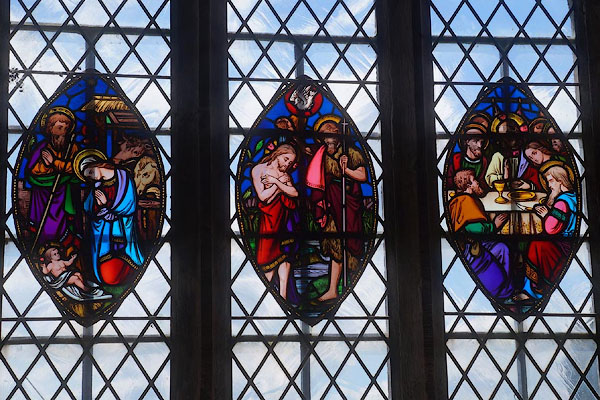
CBA60.jpg Stained glass; the Nativity, Baptism of Christ, the Last Supper, by William Wailes.
(taken 9.7.2014)
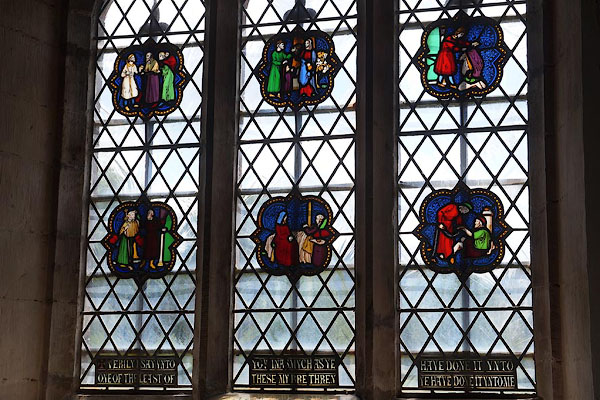
CBA61.jpg Stained glass; Acts of Charity, by William Wailes, 1845.
(taken 9.7.2014)
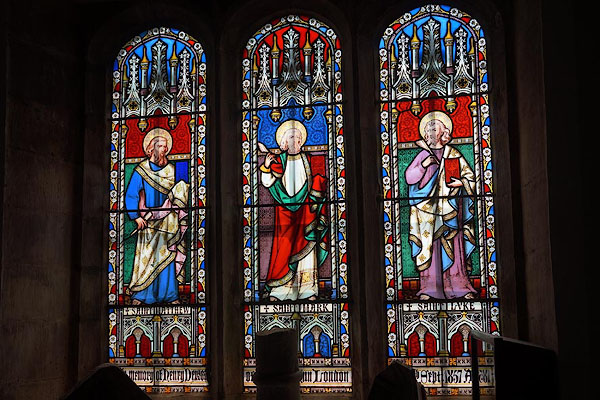
CBA62.jpg Stained glass; St Matthew, St Mark, St Luke, by William Wailes, about 1857.
(taken 9.7.2014)
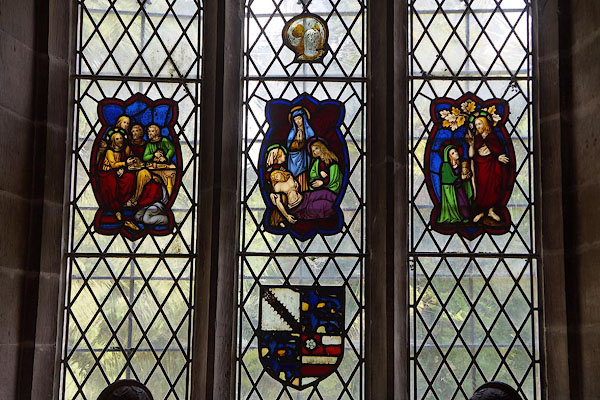
CBA63.jpg Stained glass; Anointing of Christ's feet, three Marys with the dead Christ, Christ and Mary Magdalene, etc, by William Wailes.
(taken 9.7.2014)
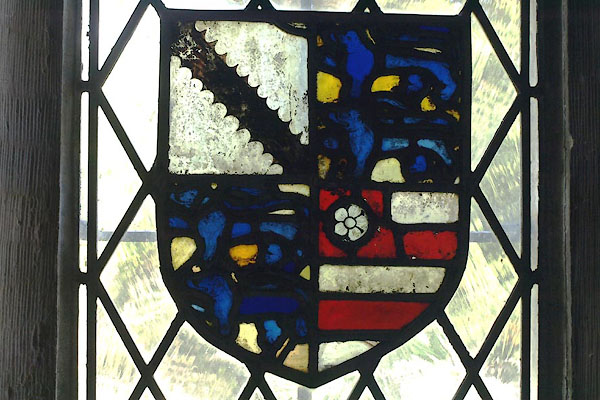
BYJ05.jpg Stained glass, coat of arms
(taken 22.5.2013)
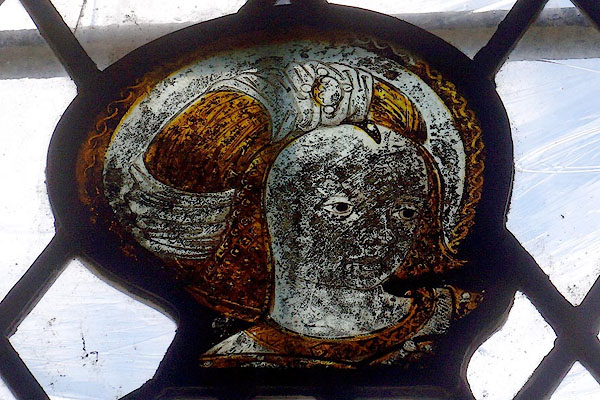
CBA64.jpg Stained glass.
(taken 9.7.2014)

CBA65.jpg Stained glass, east window; St Herbert, the Crucifixion, St Kentigern, by Alfred Tombleson at C E Kempe Studios.
(taken 9.7.2014)
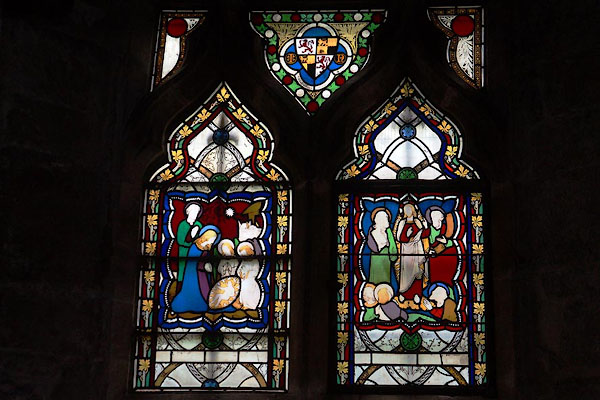
CBA66.jpg Stained glass; the Nativity, the Transfiguration, by William Wailes.
(taken 9.7.2014)
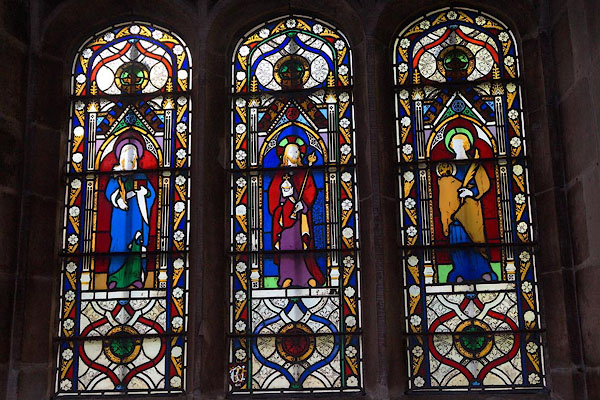
CBA67.jpg Stained glass; the Blessed Virgin Mary, Christ Saviour of the World, St John, by William Wailes, about 1845.
(taken 9.7.2014)
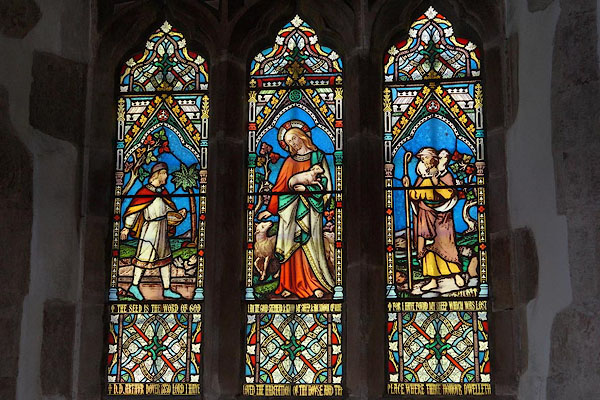
CBA68.jpg Stained glass; the sower, Christ the Good Shepherd, the shepherd and the lost sheep, by William Wailes, about 1859.
(taken 9.7.2014)
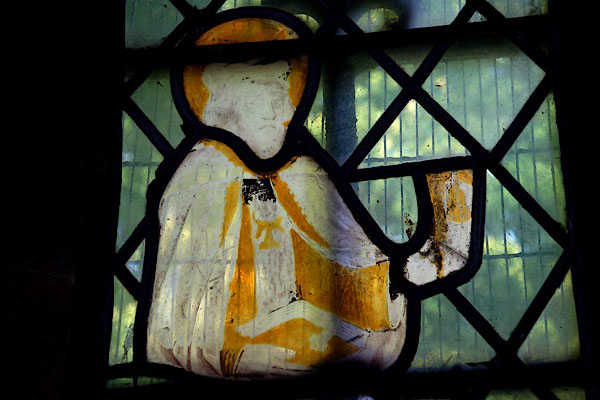
CBA69.jpg Stained glass;
(taken 9.7.2014)
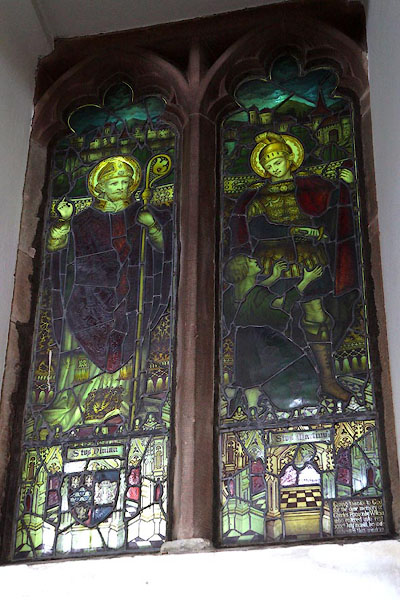
CBA70.jpg Stained glass; St Ninian, St Martin, design by Ernest Anson, made by C E Kempe Studios, 1904.
(taken 9.7.2014)
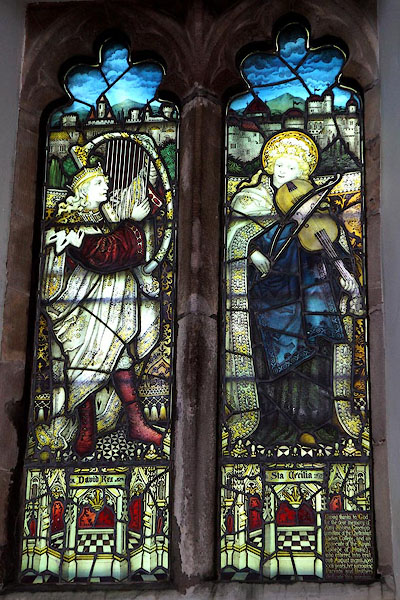
CBA71.jpg Stained glass; King David and harp, St Cecilia with a rebec, design by Ernest Anson, made by C E Kempe Studios, about 1902.
(taken 9.7.2014)
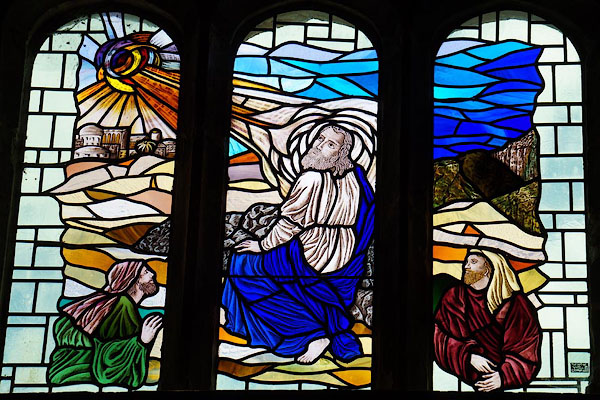
CBA76.jpg Stained glass.
(taken 9.7.2014)
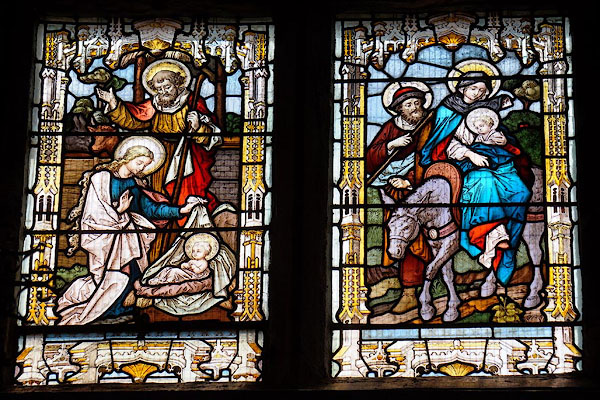
CBA77.jpg Stained glass; the Nativity, the Flight into Egypt, by Mayer, Munich.
(taken 9.7.2014)
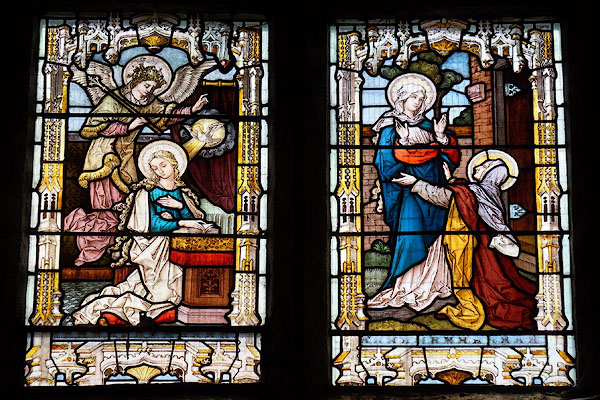
CBA78.jpg Stained glass; the Annunciation, Elizabeth and the Blessed Virgin Mary, by Mayer, Munich.
(taken 9.7.2014)
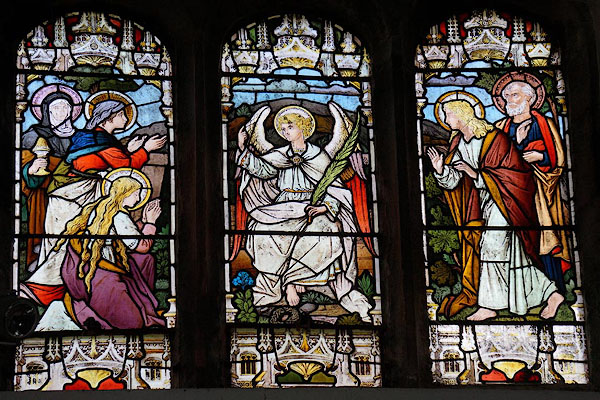
CBA79.jpg Stained glass; the Empty Tomb, by Mayer, Munich.
(taken 9.7.2014)
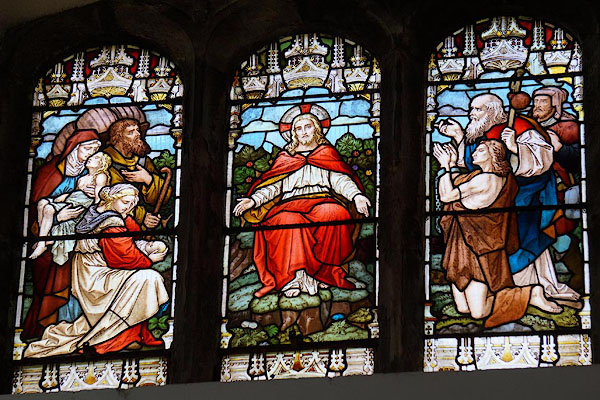
CBA80.jpg Stained glass; Christ, by Mayer, Munich.
(taken 9.7.2014)
item:- stained glass
 goto source
goto sourceGentleman's Magazine 1849 part 1 p.252 "... About the same date [1812?] also much of the ancient stained glass that formerly adorned the windows was found to have been removed by the galzier, who, during a long course of years, acted under orders to keep the windows in repair. Not being looked after, he was in the practice of taking out bits of the painted glass; so that in process of time he contrived to carry away all except the figure of St. Anthony, the head of Magdalen, and the Ratciffe arms; and with the pieces thus abstracted he formed or covered a clock-case, which is in the possession of some of his descendants, in a distant part of the county."
 goto source
goto sourceGentleman's Magazine 1849 part 1 p.376 "..."
"The windows adorned with stained glass are but six in number. They are all the production of that tasteful artist Mr. Wailes of Newcastle-upon-Tyne: and it will probably not be devoid of interest if an enlarged description is afforded of what has been done by the judicious introduction of this resplendent material, harmonized by taste and skill in the execution, to give effect and character to the sacred building. They are designed in conformity with the style of the window decoration which prevailed at the end of the fifteenth century; and to an observer learned in the history and genius of of ancient fenestral embellishment, each of them in accordiance with the depths of those expressive times the Middle Ages, when a regular system of the mystical meanings of colours was in use, will be found to have been made to tell some tale of local feeling, or convey a truth in the typical language of this beautifully revived Christian art."
"The large east window, and also the windows at the east and west ends of the south aisle, are the gifts of the liberal individual at whose expense the church has been restored. The large window, from its size and happy combination of colours and designs, is a splendid effort of gorgeous colouring. The seven scriptural subjects, which, among the blaze of hues that fascinate and overpower the eye, bestow its chief character, are incidents of the last days of the Saviour upon earth: 1, Christ washing the Apostles' feet; 2. The Last Supper; 3. The agony in the garden; 4. Christ bearing his cross; 5. The Crucifixion; 6. Angels at the sepulchre. In the tracery in the head is the Ascent into heaven, with figures of angels holding labels and harps; and above all, an Agnus Dei; the whole of these stories representations being interspersed with various elegant devices, which, by the disposition and tones of the predominating colours, produce a brilliant picture, full of the finest effects and devotional influences."
"The east window of the south aisle, called the Derwentwater Chapel, or Magdalen's Chantry, contains the appropriate pictorial subjects of Mary Magdalem washing the Saviour's feet, the three Marys at the tomb of Christ, and Christ and Mary Magdalen. Above the second of these pictures appears, in ancient stained glass, the head of the Magdalen; and at the foot is now correctly placed the armorial escutcheon of the Ratcliffes, impaling quarterly 2 and 3 Dame Alice's paternal coat, and 4, Argent, two bars gules, on a canton of the first a cinquefoil of the second, Derwentwater; through whose blazonry the mellowed light falls with jewelled radiancy upon the brasses and motionless effigies of the families whose remains were entombed beneath. It is apprehended that in the cleansing of this escutcheon, previous to its being set up in the situation it now occupies, the Ratcliffe arms in the first quarter of the shield have inadvertently been blundered, as a difference is perceivable between the blazon and the arms of the same house engraven on the brazen shields in the slab beneath."
"The vestry window, at the west end, contains the figures of St. Cuthbert and St. Kentigern, and attracts admiration, not only for the perfect tones of its solemnly contrasted colouring, but for its striking position when seen"
 goto source
goto sourceGentleman's Magazine 1849 part 1 p.377 "through the doorway of the close oaken wainscot which separates the vestry from the south aisle."
"The east window of the north aisle, known as the Hulton window, from its having been put up at the cost of a gentleman of that name resident in the neighbourhood, has illustrations of the Adoration and the Transfiguration. Amid the variegated tracery which adds to the expression of this window are also noticeable the heraldic bearings and name of the generous-minded donor, by whom, together with a full, handsome silver gilt service of plate for the altar, it was offered as a further enrichment to the church."
"The adjoining window on the north side of the same aisle is, from the name of its donor, likewise a gentleman resident in the vicinage, called the Spedding window, and engages attention for the gracefulness of its drawing, and the chaste richness of its colouring. It is of three lights: the first is adorned with the figure of the Virgin Mary, holding her emblem, the lily, in one hand, and a bible in the other, with this text at her feet: "Ecce ex hoc beatam me vocant omnes generationes;" the second light has the Saviour of the world, bearing the sceptre and the globe, surmounted by a cross, with this sentence underneath: "Ego sum resurrectio et vita;" and in the third light is Saint John, with the eagle and a reed in his hands, and the words "Ecce filius tuus" at his feet. Beneath the figure of the Saviour is a circle, bearing on its outer rim an inscription, setting forth by whose generosity this handsome and impressive addition to the fenestral decoration of the hallowed fane was given."
"The sixth or remaining stained glass window, called "The Memorial Window," is the second from the east end of the south aisle. It was put up at the charge of the parishioners, as a testimonial to perpetaute their grateful appreciation of the liberality and estimable qualities of the restorer of the church; and the story its pictorial imagery tells, is by the subscribers felt to be not less truthfully applicable than worthily merited. The window is of three lights, each adorned with two subjects taken from the sacred page. Those in the first light are illustrative of the following sentences in Matthew, chap. XXV. 35: "I was an hungred, and ye gave me meat; I was thirsty, and ye gave me drink." The second light displays subjects from the same Evangelist, verses 35, 36 of the same chapter: "I was a stranger, and ye took me in; I was naked, and ye clothed me;" - and in the third light are illustrations from the same chapter and verse: "I was sick, and ye visited me; I was in prison, and ye came unto me." Running underneath the whole, the following text from the same inspired writer, verse 40, - "Verily I say unto you, inasmuch as ye have done it unto one of the least of these my brethren, ye have done it unto me," - forms a significanet and fully acknowledged enumeration of the virtues and benevolent disposition of the individual to whose honour this window was set up. Affixed on the ledge of the window beneath is a brass tablet, on which the following record is engraved:-"
""A Memorial Window by the Parishioners, gratefully to commemorate the munificent restoration and embellishment of this Church by James Stanger, esquire.
A.D. 1845.
The Rev. JAS. LYNN, Vicar.
HENRY WOOD, GEORGE WILLIAMSON, Churchwardens.""
"In the second window from the east end of the north aisle is the half-length figure of that eremite Saint Antony, with his bell and book, in ancient stained glass, the colours of which have all faded except the black and bright yellow, but leaving the outlines of the countenance and habit still clearly visible."
